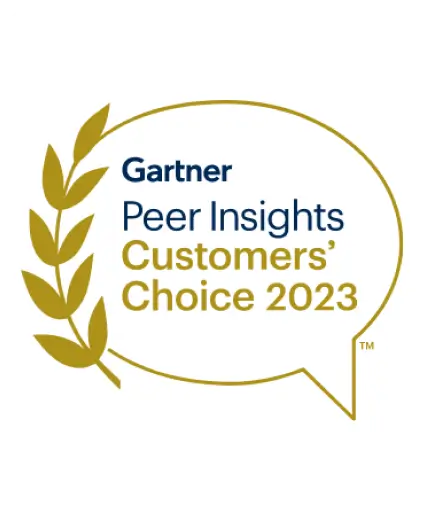Executive summary
We live in a digital-first world where the heartbeat of any thriving business is its ability to connect seamlessly with customers. The backbone of outstanding customer engagement lies in choosing the right customer service software. This comprehensive blog peels back the layers of customer service software, highlighting its crucial role in building enduring customer relationships. From exploring the various benefits of customer service software for businesses and their customers to navigating the features, types, and selection strategies, we explain how digital customer service platforms can revolutionize the way businesses interact with their clientele.
Imagine a world where every customer query is met with not just a response but a conversation; each support ticket is resolved and transformed into a memorable customer experience. It is no longer a distant utopia. It’s the tangible reality businesses can achieve with the right customer service software. HubSpot reports that 93% of consumers return to brands with outstanding customer service. In the maze of today’s digital ecosystem, customer service software is your business’s digital envoy. It ensures every customer interaction is as personalized and effective as a face-to-face encounter.
Related must-reads:
- 10 Bad customer service examples (How to fix them)
- Customer service automation – A full guide
- 12 Customer service metrics to measure in 2024
- Should your business outsource customer service?
The journey towards selecting the perfect customer service platform for your business is like finding the right ingredients for a gourmet meal. Each component must be of the highest quality. Furthermore, it should complement the others and ensure a combination that delights the senses.
Shifting gears from the conventional, let’s uncover the essence of customer service software. It is way more than just about what this software does. It is about what it enables your business to become—an entity that listens, understands, and anticipates the needs of its customers. Moreover, it is about crafting experiences that resonate long after the interaction concludes. Through this blog, we aim to show the path to selecting software that doesn’t just answer calls but opens dialogues, building bridges between businesses and their customers in meaningful and impactful ways.
What is customer service software?
Customer service software is a transformative tool that redefines the art of customer interaction. Think of it as the Swiss Army knife for customer support teams, equipped with everything from ticketing systems to live chat and knowledge bases to CRM integration. Businesses should not mistake it as merely a tool. It is a comprehensive platform designed to streamline the process of managing customer inquiries, feedback, and support requests. It functions as the bridge between a business and its customers. Moreover, it enables a smoother, more efficient dialogue that can adapt to the demands of both parties in real-time.
Related reads: Help desk ticketing system: Best practices for businesses
Imagine a busy café where every patron’s preferences are remembered – from their favorite table to how they like their coffee. Customer service software aims to replicate this level of personalized attention but on a much larger and digital scale. It organizes incoming requests and sorts them by urgency or category. Furthermore, it ensures they’re assigned to the right team member, all while keeping the customer informed every step of the way. Beyond logistics, it gets into the customer’s history with your brand, pulling up relevant data to provide a service that’s as personalized as a barista remembering your order.
The utility of customer service software extends far beyond the mere organization. It’s also about depth and context. Integrating seamlessly with CRM systems, it pulls relevant customer data into a single view. This data includes purchase history, previous interactions, and preferences. It gives agents a 360-degree perspective of the customer. Customer service software is way more than just about addressing a current issue. It is about anticipating needs, personalizing responses, and building a relationship that transcends the transactional. Remember, the right customer service software can elevate your brand.
Benefits of using customer service software?
Adopting customer service software is a transformative shift that benefits both your business and your customers. This technology is about crafting an efficient, personalized, and scalable support ecosystem. Let’s explore how this digital lever can uplift every facet of your customer service strategy.
Related read: 10 Reasons why is customer service important in 2024
For your business
1. Improved efficiency and productivity
The immediate boon of integrating customer service software is a leap in efficiency and productivity. It is way more than just about speeding up response times. It is about orchestrating your team’s talent where it shines the brightest. With routine inquiries handled through automation, your team can channel their focus toward complex, nuanced customer challenges.
Picture this: A chatbot handles basic product inquiries on your website while your team dedicates its expertise to resolving in-depth technical issues, enhancing both productivity and job satisfaction.
2. Enhanced customer satisfaction
Enhanced customer satisfaction is a natural outcome of streamlined operations. Customer service software ensures that no query goes unanswered and that every customer journey, from complaint to resolution, is as smooth as silk.
Related read: How can customer journey maps improve customer experiences?
Consider the impact of a unified customer view—where past purchases, preferences, and interactions inform every response. This insight allows your team to address the current issue and also preempt future queries, creating a cycle of continuous satisfaction.
3. Data-driven decision making
In customer service, knowledge is power. Customer service software acts as a repository of insights, offering a granular view of customer interactions, satisfaction levels, and service bottlenecks. With the help of this data, your business can pivot from reactive to proactive. Moreover, it tailors services to meet emerging needs and refine your approach based on solid analytics, not guesswork.
4. Reduced costs
The economic argument for customer service software is compelling. By automating standard inquiries and optimizing your team’s workflow, the software reduces the need for an extensive support staff. It directly impacts your bottom line. More so, it minimizes the cost associated with customer churn by elevating satisfaction levels. It proves that the right software isn’t an expense but an investment in customer retention.
Related read: Customer Retention: 15 Strategies to Improve CR
5. Scalability and flexibility
As your customer base expands, so does the complexity and volume of inquiries. Customer service software scales with your business. It ensures that your quality of service remains impeccable regardless of demand. This scalability ensures that your business consistently meets customer needs, future-proofing your service strategy.
For your customers
1. Faster and more convenient support
Patience is a rare commodity today, and customer service software delivers the instant gratification your customers crave. Providing support across a multitude of channels (social media, email, chat) ensures that help is always within reach.
Imagine a customer facing a billing issue at midnight. The customer finds immediate assistance through a chatbot. It transforms potential frustration into a moment of brand trust.
2. Self-service options
Empowerment is at the heart of modern customer service. Through comprehensive FAQs and intuitive self-service portals, customers can resolve their queries independently. This empowerment enhances satisfaction and also fosters a sense of customer autonomy. That makes them more likely to engage with your brand positively.
Related read: Self customer service: Navigating the new era of empowered consumers
3. Personalized experience
In today’s market, personalization is not a luxury—it’s an expectation. Customer service software enables utmost personalization that makes each customer feel like they’re your only customer.
From tailored product recommendations to personalized support based on past interactions, this software ensures that every touchpoint with your brand feels intimate and unique.
4. Improved communication
Unified communication ensures that your customers enjoy a cohesive experience, regardless of the channel they choose. The transition is seamless, whether switching from chat to email or from social media to phone. This continuity ensures that the conversation flow remains uninterrupted. Moreover, it preserves the context and reduces customer effort.
Typical features of customer service software
Exceptional customer service is the linchpin of business success. Salesforce says 78% of customers will return to a brand with incredible customer service, even after an error is made. The right customer service software is a multifaceted toolkit. It equips businesses with the capabilities to meet modern consumer expectations head-on. Below are the quintessential features that define state-of-the-art customer service platforms.
Omnichannel support: A unified approach to customer engagement
Multi-channel communication
Today’s consumers move fluidly across platforms, expecting consistent service whether they reach out via email, social media, or live chat. Omnichannel support software consolidates these interactions, ensuring no customer feels lost in the shuffle.
Picture a scenario where a customer initiates a query on social media and concludes it through email, all while experiencing a seamless service transition.
Centralized view
The power of omnichannel support lies in its ability to provide a centralized view of customer interactions. This singular lens into the customer journey allows businesses to deliver personalized responses informed by previous interactions, regardless of the communication channel. It’s the difference between greeting a customer as a stranger and welcoming them like an old friend.
Contextual awareness
Understanding the context behind each customer inquiry enhances the quality of support provided. Omnichannel software equips teams with contextual cues, enabling them to anticipate needs and tailor responses. This depth of understanding transforms routine support into an opportunity to deepen customer relationships.
Automation and efficiency: Streamlining for success
Ticketing system
The ticketing system is at the heart of customer service software, a feature that transforms chaotic inboxes into a well-oiled support machine. Automating ticket generation and routing ensures that every inquiry is acknowledged and directed to the appropriate team member, dramatically reducing response times and increasing customer satisfaction.
Workflows and automation
Automated workflows are the silent heroes of customer service. They work behind the scenes to ensure efficiency. From auto-assigning tickets based on expertise to setting reminders for follow-ups, automation frees up human agents to focus on solving complex issues. That enhances both productivity and customer experience.
Chatbots and AI-powered solutions
AI-powered chatbots represent the fusion of technology and customer service. They offer instant responses to common queries and gather preliminary information. Besides enhancing customer satisfaction with quick resolutions, these AI bots also optimize agent workload by filtering and prioritizing inquiries based on complexity.
Related read: Customer Service Chatbots – Benefits and Examples
Knowledge management and self-service
Knowledge base
A well-curated knowledge base is the first line of defense in customer support. It empowers customers to find answers to their questions independently. This self-service option reduces the support volume and allows customers to resolve issues at their convenience, increasing overall satisfaction.
Self-service portal
Self-service portals offer a personalized space for customers to manage their interactions with your business, from tracking support tickets to accessing tailored resources. This empowerment leads to a reduction in direct inquiries. Moreover, it allows your support team to concentrate on more intricate issues.
Community forums
Community forums foster a sense of belonging among customers. They enable them to share solutions and insights. This collaborative environment enhances customer engagement and also provides valuable crowd-sourced feedback for improving products and services.
Analytics and reporting: Insights into action
Real-time dashboards
Real-time dashboards offer a bird’s eye view of your customer service landscape. They present key metrics such as ticket volumes, response times, and customer satisfaction scores. This immediate insight allows businesses to make data-driven decisions. As a result, they optimize their service strategy on the fly.
Reporting tools
Comprehensive reporting tools dissect the vast amount of data collected through customer interactions. They transform it into actionable insights. Whether it’s identifying common issues or assessing team performance, these insights are crucial for continuous improvement.
Performance management
Performance management features enable supervisors to track and evaluate individual and team performance against predefined KPIs. It helps identify training needs and recognize and reward outstanding service.
Integrations: Creating a cohesive ecosystem
Integration capabilities ensure that customer service software doesn’t operate in isolation but as part of a cohesive business ecosystem. Whether it’s syncing with CRM for a 360-degree customer view or connecting with ecommerce platforms for seamless order management, integrations amplify the effectiveness of customer service efforts.
Related read: Go-live in an instant with our seamless integrations
Different types of software for customer support
The tools you choose for customer service support can define your support quality. Like an artist selects brushes to bring a painting to life, businesses must choose the right software to craft exceptional customer experiences. Let’s explore the various types of customer service software, each with its unique role in painting the bigger picture of customer satisfaction.
Customer Relationship Management (CRM) Software
CRM software is the cornerstone of personalized customer interactions. CRM software centralizes customer data, from contact information to purchase history and preferences. As a result, these systems enable businesses to tailor their communications and services to each individual, making every customer feel uniquely valued.
For instance, integrating a CRM system allows a sales representative to access a customer’s entire interaction history. These systems provide insights that can guide a more personalized and effective sales approach. This holistic view enhances customer satisfaction and also drives sales by leveraging past interactions to predict future needs.
9 Top CRM software platforms in 2024
- Zendesk Sell
- Freshsales
- HubSpot
- Less Annoying
- Sales Creatio
- Apptivo
- Insightly
- Salesforce
- Copper
- Zoho
Help Desk Software
Help desk software is the central hub for managing customer queries. They streamline the support process by organizing tickets, assigning them to the appropriate agents, and tracking their resolution. This system ensures that no customer query falls through the cracks. As a result, they enhance the efficiency and effectiveness of the support team.
For example, a well-implemented help desk system can dramatically reduce response times by automatically routing tickets based on the issue type or customer priority. This swift response solves customer issues more efficiently and also significantly boosts customer satisfaction and loyalty.
The 13 best help desk software of 2024
- Zendesk
- HappyFox
- Help Scout
- SolarWinds Service Desk
- Jira Service Management
- Salesforce Service Cloud
- SysAid
- Vivantio
- Zoho Desk
- Freshdesk
- HubSpot Service Hub
- Spiceworks Cloud Help Desk
- LiveAgent
Service Desk Software
Service desk software extends beyond traditional support. They focus on providing comprehensive IT service management. A service desk software caters to both internal employees and external customers, addressing a broader range of requests, from technical issues to service disruptions.
Implementing service desk software can transform the IT support experience. Imagine a tech company that streamlined its IT request process. By providing a self-service portal for common issues, the company reduced its ticket volume. That allowed the IT team to focus on more complex problems and projects.
The 15 best service desk software in 2024
- Zendesk
- Help Scout
- Jira Service Management
- Vision Helpdesk
- Salesforce Service Cloud
- Slack
- Freshservice
- SysAid
- ServiceNow IT Service Management
- Spiceworks
- GoTo Resolve
- Solarwinds Service Desk
- Rezo
- Exalate
- ManageEngine Servicedesk Plus
Messaging and Live Chat Software
Messaging and live chat software offer customers instant access to support. It mirrors the immediacy and convenience of personal messaging apps. This software enables real-time communication, reducing wait times and enhancing customer satisfaction.
Imagine a retail website integrating live chat, which increased conversion rates, as potential buyers could instantly clarify product queries. This immediate support will improve the shopping experience and also directly impact sales.
Knowledge base software
Knowledge-based software empowers customers to find answers independently through detailed articles, how-to guides, and FAQs. This self-service approach reduces support volume and allows customers to resolve issues at their convenience.
Picture this: A software company leveraging a comprehensive knowledge base experienced a significant decrease in routine support inquiries. It enables their team to handle complicated problems, thereby improving overall service quality.
Top 12 Knowledge Base Software for 2024
- Help Scout
- Guru
- Document360
- Obsidian
- HelpJuice
- Zendesk
- BookStack
- inSided
- Notion
- Confluence
- Bloomfire
- MediaWiki
Ticketing software
Ticketing software streamlines the process of issue resolution by organizing customer inquiries into tickets. It allows for efficient tracking and management. This system ensures every issue is addressed in a timely and organized manner.
Here is an example: By implementing ticketing software, a service provider can decrease its average resolution time. It will significantly improve customer satisfaction and reduce repeat inquiries.
Social media listening tools
Social media listening tools enable businesses to monitor and respond to customer mentions and inquiries across social platforms. This proactive approach to customer service allows businesses to engage customers in their preferred online spaces. It enhances the brand presence and customer satisfaction.
For example, a beauty brand uses social media listening tools to engage customers and address their concerns on platforms like Instagram and Twitter. It leads to a considerable increase in customer engagement and reinforces brand loyalty and positive sentiment.
The 11 Best AI Social Listening Tools to Use in 2024
- Brand24
- Brandwatch
- XPro Tweetdeck
- Awario
- Buffer
- Sprout Social
- Keyhole
- Talkwalker
- Hootsuite
- BuzzSumo
- HubSpot
How to choose the right customer service software?
Selecting the right customer service software can be challenging. With countless options and features, it’s crucial to find a solution that meets your current needs and also grows with you. Let us identify those markers that guide you toward making an informed decision, ensuring your investment enhances both customer satisfaction and team efficiency.
Step 1 – Identify your needs
Start by clearly understanding your business objectives and how customer service fits your overall strategy. Whether you’re aiming to boost customer satisfaction, streamline operations, or increase sales through better service, identifying these goals will shape your software selection process.
For example, if improving response time is a priority, look for software with strong automation and ticket routing capabilities. Implementing such a system accelerates support resolutions and also enhances customer satisfaction. It will directly impact your bottom line.
Step 2 – Integration capabilities
In today’s digital ecosystem, your customer service software should not be an isolated island. Instead, it should be a connected continent. It should seamlessly integrate with your CRM, sales, and marketing platforms. Moreover, it should ensure a unified view of the customer journey.
Consider a scenario where your customer service software integrates with your CRM. This integration allows personalized service based on a customer’s purchase history and interactions. It will offer a tailored experience that can significantly increase customer loyalty and retention.
Step 3 – Multi-channel support
Customers expect to reach you through their preferred channel, be it email, social media, chat, or phone. Multi-channel support ensures a consistent and seamless customer experience across all platforms.
Imagine the case of a retailer who can provide cohesive service across online and offline channels by implementing multi-channel support. It will significantly improve customer satisfaction scores and reduce churn.
Step 4 – Scalability
As your business grows, so does the complexity and volume of customer inquiries. Your chosen software should scale with your business. It should accommodate increased demand without compromising service quality.
For instance, a SaaS company chose a scalable customer service platform that effortlessly adapted to its rapid growth. It will ensure customer service remains top-notch as they expand into new markets.
Step 5 – User-friendly interface
A complex system can hinder productivity. A user-friendly interface ensures your team can maximize the software’s capabilities without a steep learning curve. That will make onboarding new staff swifter and more efficient.
Here is an example: A tech startup adopted a user-friendly system. It drastically reduced training time for new support agents and enabled them to deliver quality support from day one.
Step 6 – Automation and AI capabilities
Automation and AI can take repetitive tasks off your team’s hands. It will allow them to focus on more complex customer needs. From AI chatbots handling basic inquiries to AI suggesting solutions based on past interactions, these features can significantly enhance service efficiency.
For example, an ecommerce platform utilized AI-powered chatbots to handle common customer queries. It would allow their human agents to focus on complex issues, thereby improving both efficiency and customer satisfaction.
Step 7 – Customization options
Every business is unique, and so are its customer service needs. Customization options allow you to tailor the software to fit your specific workflows, processes, and branding.
Picture this: A custom-configured customer service platform enabled a boutique hotel chain to incorporate its brand’s unique tone and processes into every customer interaction. It would enhance brand consistency and customer loyalty.
Step 8 – Reliability and uptime
Your customer service software should be as reliable as the service you aim to provide. High uptime guarantees your support system is always available when your customers need it.
Imagine a financial services company prioritizes software reliability to ensure uninterrupted customer support. That would help them maintain trust and reliability with their clients.
Step 9 – Security and compliance
In an era where data breaches are all too common, ensuring your customer service software adheres to the highest security standards and complies with regulatory requirements is non-negotiable.
A healthcare business safeguards patient information by choosing software compliant with global data protection regulations. It would reinforce their commitment to customer privacy and trust.
Step 10 – Customer support and training
The quality of support and training provided by your software vendor can significantly influence the success of your implementation. Access to expert guidance ensures you can leverage the software to its full potential.
For example, a software vendor offering comprehensive training and support could enable a retail chain to utilize their customer service platform fully. It would result in improved operational efficiency and customer satisfaction.
Step 11 – Reporting and analytics
Insightful reporting and analytics provide a window into your service performance, customer satisfaction levels, and operational efficiencies. It can guide strategic decisions and improvements.
For instance, an online marketplace plans to leverage detailed analytics from its customer service software to identify service bottlenecks. It can lead to process optimizations that enhance customer satisfaction and reduce support costs.
Step 12 – Cost and ROI
Navigating the financial landscape of adopting customer service software requires a keen eye on both the initial investment and the anticipated returns. It’s not just about the sticker price; it’s about envisioning how this tool will pay dividends in making your operations more efficient, boosting customer happiness, and, ultimately, fattening your bottom line.
Imagine this as more than a purchase—it’s an investment in your company’s future. By diving deep into the numbers with a comprehensive ROI analysis, you’re setting the stage for a decision that could transform cost centers into profit drivers. Expect to see your operational expenses shrink while customer loyalty—and the revenue it brings—grows stronger.
Step 13 – Reviews and testimonials
Customer reviews and testimonials can give real-world insights into the software’s performance, reliability, and the quality of support the vendor provides.
Let us consider the example of a non-profit organization that, evaluating peer reviews, can select a customer service software recommended for its reliability and user-friendliness. It would significantly improve their volunteer support operations.
Step 14 – Trial period
Taking advantage of trial periods allows you to test the software in your environment. It will ensure that the software meets your needs and integrates well with your existing systems before making a financial commitment.
Picture this: A trial period enabled a marketing agency to thoroughly test a customer service platform, ensuring it met their specific needs and seamlessly integrated with their CRM system before finalizing their decision.
Success stories

Hyundai boosts revenue and improves customer service with AI automation
Explore how Yellow.ai’s automation led to ~1000 car sales, a 10% retail conversion rate, and over 1.4 million user impressions

Pelago reimagines customer experience with generative AI powered conversational AI agents
Within a mere six weeks of going live, Pelago not only onboarded over 5,000 users but also achieved a striking 50% deflection rate!
The final thoughts
The pace of change is relentless today, and standing still is not an option. Adopting advanced customer service software marks a pivotal shift in how businesses engage with their customers. It’s about leveraging technology to enhance every interaction and ensure your brand stands out for its commitment to customer satisfaction.
With platforms like Yellow.ai, businesses gain access to cutting-edge tools like AI-powered chatbots and detailed analytics, which are critical for meeting today’s customer expectations. These tools are not just add-ons but essential components for creating a seamless and engaging customer service experience. By choosing the right customer service software, businesses can transform customer interactions into growth and loyalty-building opportunities.
Now, you can pick suitable customer service software and tools for your business by partnering with Yellow.ai and harnessing the power of technological advancements. Experience this easy transition by booking a demo today.
Frequently asked questions (FAQs)
How does customer service software improve customer experience?
Customer service software elevates the customer experience by ensuring inquiries are addressed quickly and accurately. Features like AI-powered chatbots provide immediate responses, while comprehensive analytics help tailor services to meet individual customer needs. It resolves issues efficiently and also personalizes the customer journey, making every interaction with your brand a positive one.
Is customer service software suitable for small businesses?
Absolutely. Customer service software is a game-changer for businesses of all sizes, including small enterprises. It streamlines customer support, making it more manageable and effective, which is critical for small teams that need to optimize their resources. Plus, many platforms are scalable, allowing the software to grow alongside your business.
How does customer service software handle data security and privacy?
Leading customer service software platforms prioritize data security and privacy, incorporating stringent measures like encryption, access controls, and compliance with international standards. It ensures that customer information is protected, building trust and safeguarding your business’s reputation.
What is the difference between on-premise and cloud-based customer service software?
The primary difference lies in their deployment. On-premise software requires installation on your company’s servers. It gives you complete control. However, it necessitates a significant upfront investment and ongoing maintenance. Conversely, cloud-based software operates on the vendor’s servers and is accessible via the Internet. This model offers flexibility, easier scalability, and generally lower initial costs.
How to measure the effectiveness of customer service software?
The effectiveness of customer service software can be measured through metrics such as response time, resolution rate, customer satisfaction scores, and overall impact on customer retention and loyalty. Regular analysis of these metrics provides insights into performance and areas for improvement.
What is the role of chatbots in customer service software?
Chatbots play a crucial role in modern customer service software by providing instant responses to common inquiries 24/7. They enhance customer satisfaction by ensuring that help is always available, freeing up human agents to tackle more complex issues.
How does customer service software support multi-channel communication?
Customer service software supports multi-channel communication by integrating various platforms—email, social media, live chat, and more—into a single dashboard. It ensures a cohesive and consistent customer service experience across all channels, making it easier for businesses to manage interactions and for customers to reach out through their preferred medium.






























